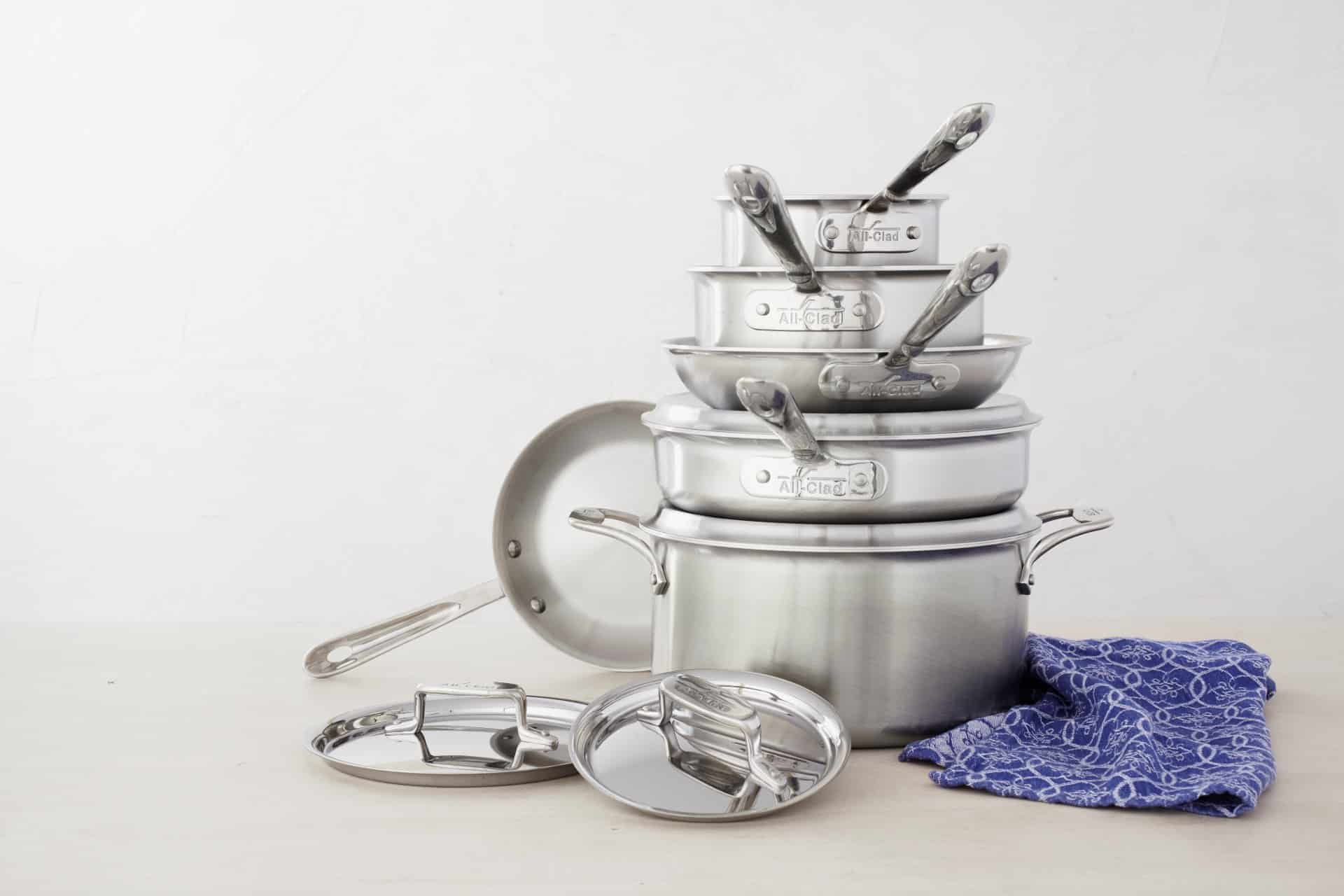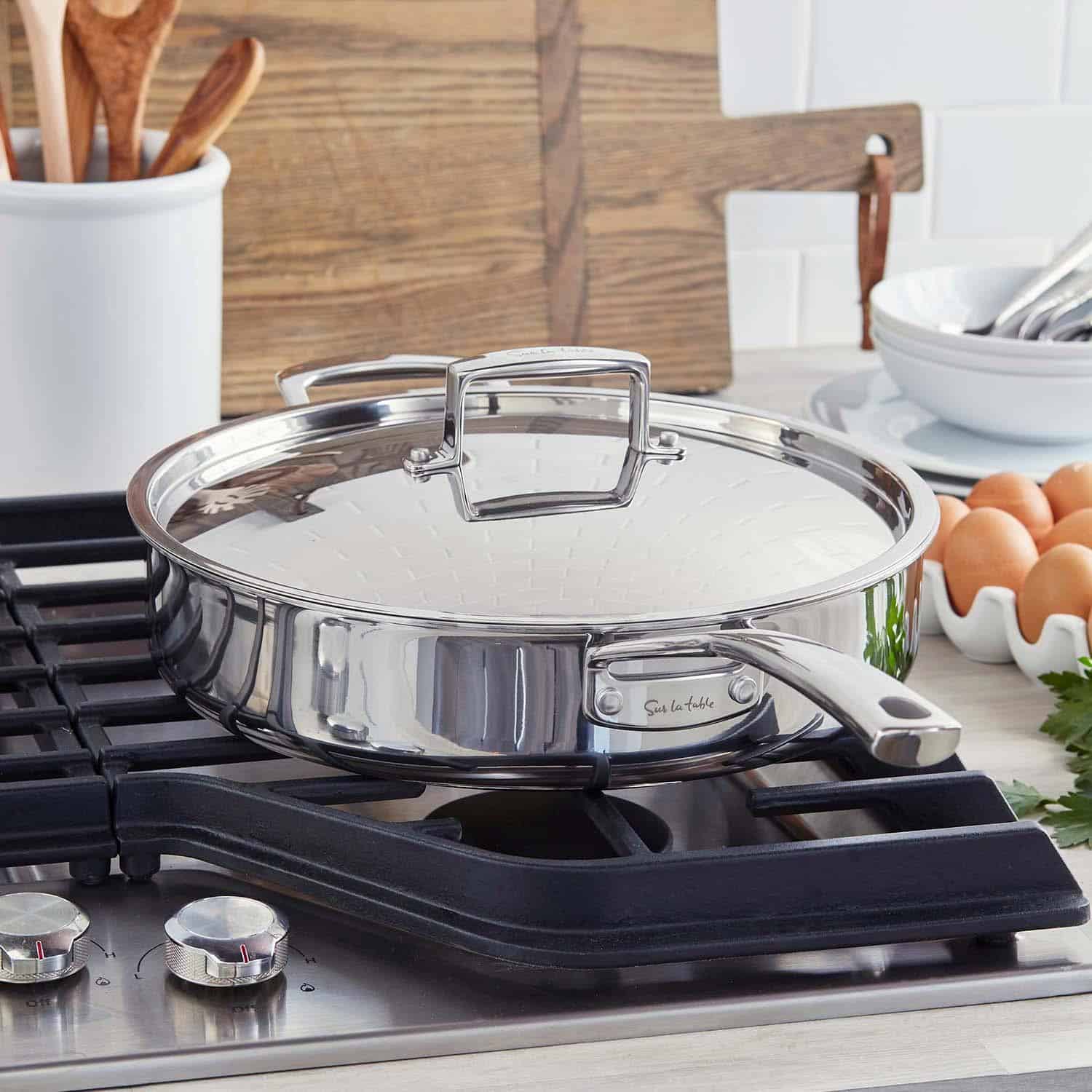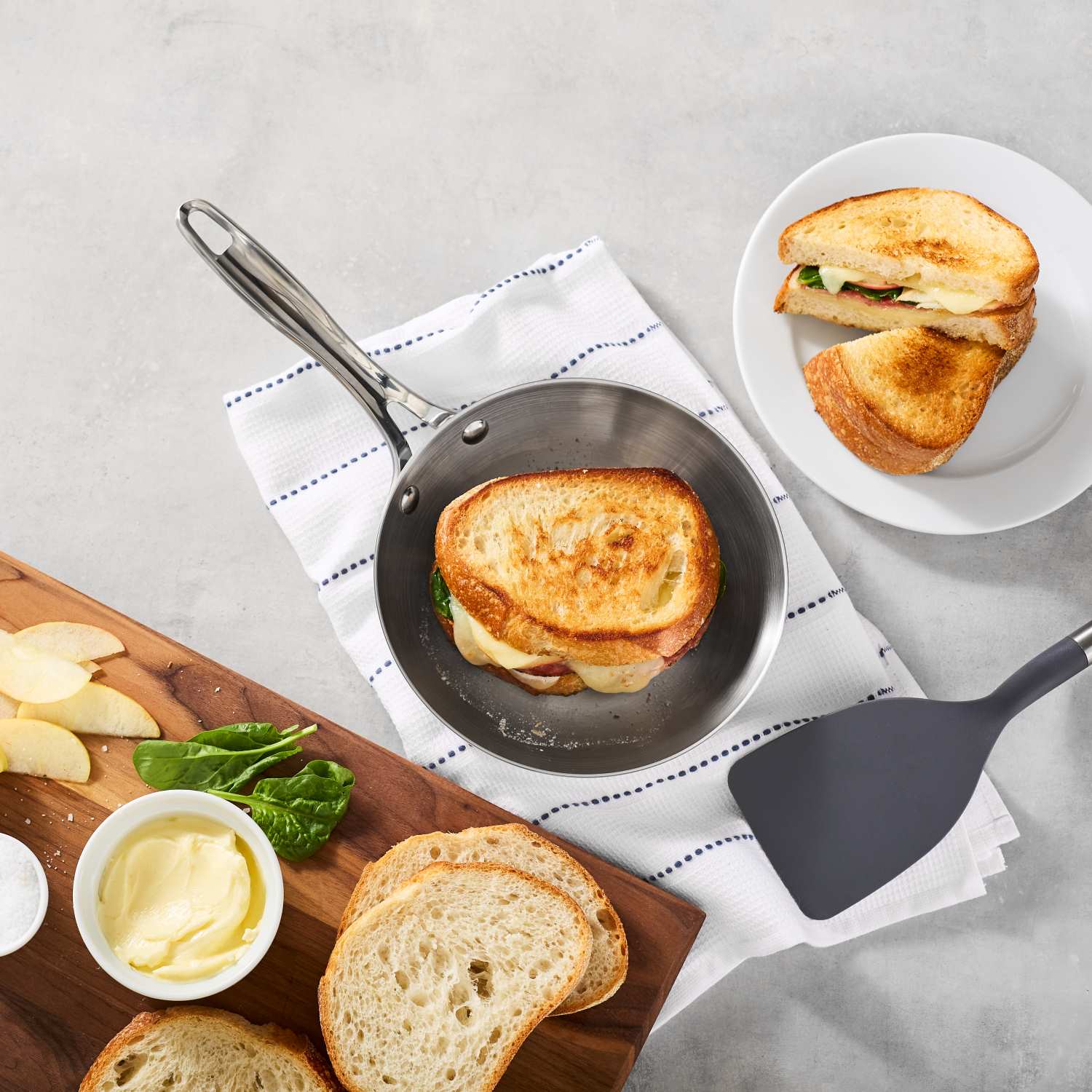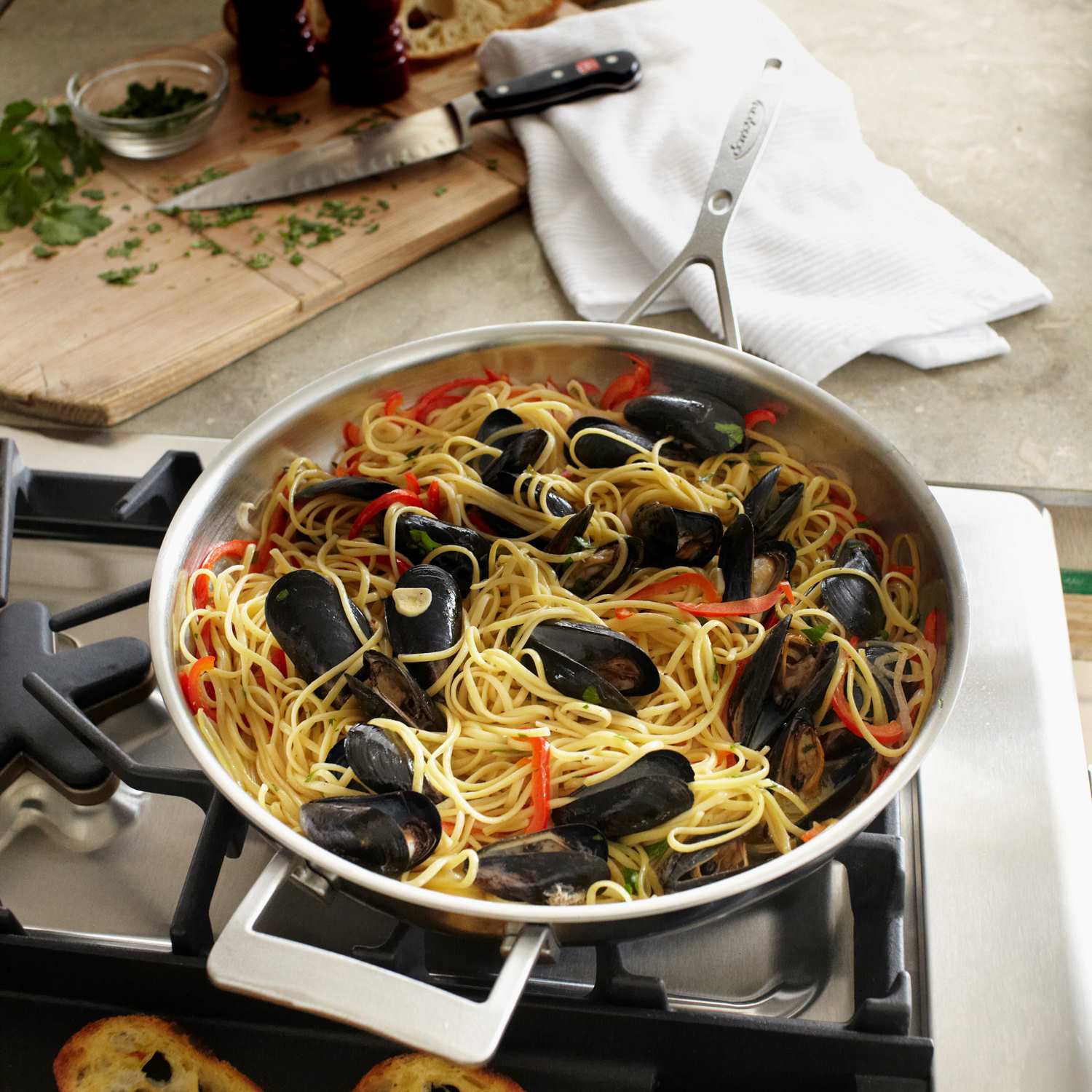Decisions, decisions.


In recent years, the conversation around the safety of kitchen cookware has gained significant momentum.
As it turns out, some cookware can leach unwanted chemicals into our meals, especially when they’re chipped, overheated or just plain old. That’s led many of us on a hunt for safer, more reliable options. And while there’s a growing list of “good guys” like ceramic and cast iron, stainless steel is emerging as a top choice for those of us wanting to keep things toxin-free without sacrificing performance or durability.
In this article, explore the standout benefits of stainless steel cookware, uncover what exactly makes it such a stellar material and find out what you need to know if you’re thinking of refreshing your cookware collection or making your very first stainless steel purchase.
Hungry for more? From skillets and saucepans to entire cookware sets, shop our collection of stainless steel cookware to find the perfect new addition to your kitchen.

With its combination of safety, durability, even cooking, versatility, ease of maintenance and style, stainless steel cookware is hard to beat.
Whether you’re a culinary novice or a seasoned chef, it offers a range of benefits that can elevate your cooking game while keeping health and safety at the forefront. Here’s why many home cooks and professional chefs alike are big fans:

Stainless steel is a carefully engineered alloy designed for performance, durability and safety. Here’s what makes it a kitchen superstar:
The alloy blend
At its core, stainless steel is an alloy of iron, carbon and chromium—typically at least 10.5% chromium. This blend is the secret behind its corrosion resistance. The chromium forms a passive layer of chromium oxide on the surface, which shields the iron from air and water. High-quality stainless steel cookware often includes nickel and molybdenum, further enhancing its corrosion resistance and durability.
Why chromium matters: The presence of chromium is crucial. It’s what gives stainless steel its remarkable ability to resist rust, staining and corrosion. Whether you’re boiling pasta, simmering sauces or frying up a storm, this material stays resilient against wear and tear, ensuring your cookware remains in top condition.
Nickel’s role: Nickel is another key player, adding to the alloy’s overall strength and maintaining its shape at high temperatures. It also enhances the corrosion resistance of stainless steel. For those with nickel sensitivities, there are nickel-free options available that still maintain excellent quality and performance.
Nonreactive
Unlike some metals that react with acidic or alkaline foods, stainless steel remains neutral, meaning no metallic taste in your tomato soup or lemon tart. This nonreactive quality makes it safe for cooking a wide variety of foods, preserving their flavors and nutritional value.
Heat conductivity
While pure stainless steel doesn’t conduct heat as well as other metals like aluminum or copper, most high-quality stainless steel cookware combats this by incorporating a core or bottom layer of a more conductive metal. This layered or “clad” design ensures even heat distribution, eliminating hot spots and contributing to its premium cooking performance.

Deciding to upgrade to stainless steel cookware is a step toward healthier, more sustainable cooking practices. However, before you make the switch, there are a few key considerations to keep in mind to ensure you get the most out of your investment. Here’s what you need to know:

Stainless steel cookware is considered very safe, with minimal risk of chemical leaching.
Its nonreactive nature means it won’t introduce toxins into your food, even when cooking at high temperatures or with acidic foods. However, it’s worth noting that in rare cases, particularly with low-quality stainless steel or when cooking for prolonged periods at extremely high temperatures, there could be a minimal release of metals like nickel and chromium. These instances are uncommon and generally not a concern for most cooking applications.
Its durability and resistance to corrosion and rust significantly reduce any health risks associated with other types of cookware. While it’s advisable to choose high-quality stainless steel and use it within normal cooking temperatures, it remains a highly safe option for everyday cooking, offering peace of mind to those conscious about kitchen safety.
Hungry for more? From skillets and saucepans to entire cookware sets, shop our collection of stainless steel cookware to find the perfect new addition to your kitchen.
JOIN THE CONVERSATION